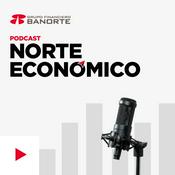183 episodios

Corporate Finance Explained | Corporate Spin-Offs: How Breaking Up Creates More Shareholder Value
16/12/2025 | 12 min
In finance, success often means getting bigger, yet time and again, the market cheers when a huge company decides to intentionally break itself up. Why does spinning off a subsidiary so often unlock massive shareholder value?In this episode of Corporate Finance Explained on FinPod, we break down the strategic logic, mechanics, and critical financial challenges behind corporate spin-offs, making it essential listening for anyone in corporate strategy, M&A, or investor relations.Spinoff Mechanics & Value DriversA spin-off is a powerful, generally tax-free maneuver where the parent company distributes shares of a subsidiary directly to its existing shareholders, creating a fully independent "pure play" company.Here are the four main reasons this strategy often makes the total value of the combined entities much larger than the original conglomerate:Strategic Focus: Separation enables each management team to focus solely on their specific business model (e.g., utility cash flow vs. software growth), thereby removing internal friction and distraction. Valuation Re-Rating (Pure Play Effect): The market hates complexity (conglomerate discount). Breaking the company apart allows analysts to value each "pure play" unit against specific, comparable peers (such as healthcare vs. aviation), instantly increasing the collective value. Better Incentives: Boards can tailor executive compensation (e.g., high stock options for a growth startup) to attract and retain specialized talent, which was impossible under the slow-growth parent. Capital Allocation Freedom: Separated companies can develop capital plans tailored to their specific needs (e.g., one invests billions in 5G, while the other focuses solely on dividends), thereby eliminating internal competition for resources.Case Studies: Breaking Up for GrowthWe examine pivotal spin-offs that redefined industries:PayPal & eBay (2015): PayPal, tethered to the eBay marketplace, was unable to partner with rivals like Amazon. Independence enabled it to launch an aggressive partnership blitz, resulting in its market cap more than doubling in three years due to the strategic freedom it afforded.AT&T & Warner Media (2022): Driven by massive capital allocation issues (feeding both the capital-intensive telecom core and the cash-burning streaming empire). The spin-off allowed AT&T to focus on paying down debt and 5G buildout.General Electric (GE): The ultimate pure play story. Separating the conglomerate into three focused businesses (Aviation, Healthcare, Energy) is projected to unlock significantly higher collective value by removing the devastating conglomerate discount.The Finance Challenge: Pitfalls and ExecutionThe strategy is powerful, but the execution is risky. Finance teams (FP&A, Treasury) must nail these critical areas:Standalone Viability: Building full financial statements from scratch to ensure the new company can survive and thrive without the parent's scale and support. Stranded Costs / Dis-Synergies: The hidden risk where the cost of duplicating shared services (IT, HR, accounting) and building new infrastructure is underestimated, potentially wiping out the expected value.Capital Structure Design: Carefully dividing the corporate debt to ensure both companies emerge with a healthy credit rating and leverage profile that fits their new strategic mission. Investor Communication: Crafting a crystal-clear narrative for investors, providing honest estimates for dis-synergy costs, and proving the math with a robust Sum-of-the-Parts (SOTP) valuation.The next time a spin-off is announced, look past the headlines: Check the clarity of the dis-synergy estimates and whether the new capital structure makes strategic sense. Radical simplification and the quest for pure play are often the most powerful tools in the corporate strategy playbook.

Corporate Finance Explained | How Inflation Impacts Profitability & How Companies Adapt
11/12/2025 | 13 min
Inflation is a brutal, immediate pressure point on corporate finance, forcing CFOs and analysts to completely overhaul their operating models. In this episode of Corporate Finance Explained on FinPod, we break down how inflation erodes profit margins, manage debt structures, and the radical countermeasures companies employ to maintain financial resilience.The Dual Attack on the Income StatementInflation hits corporate profits from multiple angles, magnifying instability in the supply chain and labor markets:Gross Margin Erosion: Driven by surging input costs (materials, components, logistics). Companies with long, complex supply chains saw freight costs spike by as much as five times during the 2021-2023 surge.Wage Inflation: A tight labor market forces labor-intensive businesses (retail, hospitality) to increase wages, often outpacing revenue growth and becoming the number one variable cost driver.Operating Expense (OpEx) Creep: Rising costs for utilities, commercial rent, insurance, and IT services further compress the overall operating margin.Structural Impact on the Balance SheetPersistent inflation triggers central bank rate hikes, making the cost of capital structural and damaging long-term valuation:WACC Escalation: Higher interest rates raise the Weighted Average Cost of Capital (WACC), instantly reducing the Net Present Value (NPV) of future projects and shrinking the list of profitable opportunities.Variable Debt Risk: Companies caught with large amounts of variable rate debt face an exploding interest expense, which can quickly become the single largest line item on the income statement.Working Capital Discipline: Cash loses purchasing power daily. Finance teams must use strict working capital discipline (accelerating AR, optimizing inventory) as an inflation insulator to preserve purchasing power.The Strategic Countermeasures PlaybookThe corporate response to inflation is a mix of strategic offense and defense tailored to the industry:Offense (Pricing Power): Utilizing Strategic Staging of price hikes, adjusting package sizes (shrinkflation), and introducing premium tiers to shift focus to perceived value.Defense (Resilience): Forging tighter partnerships with procurement to negotiate long-term contracts and implementing Supply Chain Resiliency by nearshoring production or building inventory buffers.Financial Hedging: Proactively managing debt by shifting from variable-rate to fixed-rate debt and deploying Dynamic Pricing algorithms that adjust prices daily based on real-time cost and demand inputs.Key Takeaway for Finance Leaders:Inflation is a powerful forcing function that pushes finance teams out of the accounting chair and into the cockpit as strategic operators. True success requires financial agility and the ability to adapt radically.

What's New at CFI | Excel Data Visualization & Dashboards
09/12/2025 | 19 min
Excel Data Visualization & Dashboards: Turn Raw Data into Executive-Ready StoriesExcel is the foundational tool for analysis, but simply having data isn't enough; you need to tell the story behind the numbers.In this episode of What's New at CFI on FinPod, CEO Tim Vipond introduces the new Excel Data Visualization and Dashboards course. Learn how to transform raw data into clean, clear, and powerful visuals that drive business decisions, no matter your industry.This course is a masterclass in building executive-ready dashboards from scratch, making it essential for FP&A, Marketing, Operations, and all analytical roles.This episode covers:The Power of Excel: Why Excel remains the ultimate "blank canvas" for visualization and the foundational skill set for tools like Power BI or Tableau.Mastering the Visual Toolkit: Learn to build and use advanced charts like Waterfall Charts (for variance analysis), Combo Charts (for margin vs. revenue), Sparklines, and Football Field Charts (for valuation ranges).End-to-End Dashboard Creation: Gain the confidence to plan, set up, and build complete, beautiful dashboards that are clearly sectioned, titled, and formatted for maximum impact.Highlighting Insights: The critical skill of moving beyond just building a chart to actively using color, arrows, and annotations to highlight the specific insights that drive business change (e.g., maximizing margins or accelerating growth).Developing Taste: Tim shares career advice on how to develop "good taste" in data visualization by actively seeking out and being inspired by varied internal and external reports (pitch decks, board reports, operations decks).

Corporate Finance Explained | The Business of Bankruptcy: How Companies Collapse and Come Back
04/12/2025 | 13 min
FinPod: Corporate Bankruptcy Strategy - Reorganization vs. LiquidationWhen a major corporation files for bankruptcy, it’s not always the end, it's often a high-stakes financial strategy for survival. In this episode of Corporate Finance Explained on FinPod, we unpack the mechanics of corporate failure, differentiating between total liquidation and strategic rebirth, and detailing the skills finance teams use under immense pressure.The Two Doors of Corporate FailureA distressed company faces two distinct legal paths in the U.S., each with a polar opposite outcome:Chapter 7: Liquidation The company ceases all operations immediately. A trustee sells off all assets to pay creditors, and the business is gone forever. Stockholders are typically wiped out.Chapter 11: Reorganization A court-supervised process designed to allow the business to survive. It provides a massive shield, halting creditor lawsuits and allowing management time to perform radical surgery on the balance sheet.The Mechanics of Rebirth (Chapter 11)Chapter 11 demands core financial maneuvers that would be impossible in a normal environment:Debt-for-Equity Swap: The core strategic twist. Debt owed to bondholders is often converted into equity. The company's most risk-averse creditors suddenly become the new owners, fundamentally changing the company's DNA and strategy.DIP Financing: Debtor in Possession financing provides the company’s lifeblood. This new debt is given super-priority status by the court, meaning it jumps ahead of all pre-existing creditors for repayment, keeping the lights on during restructuring.Surgical Restructuring: The court grants the power to break expensive, long-term contracts, such as unsustainable legacy store leases, supply deals, or labor contracts, allowing the company to shed structural costs and emerge healthier.Case Studies: Successes vs. Terminal FailuresWe examine the difference between collapse and rebirth through real-world examples:Reorganization Successes: General Motors (GM) and Delta Airlines used Chapter 11 to eliminate unprofitable brands, restructure billions in debt, and shed massive legacy obligations. Marvel Entertainment used restructuring to regain control of its IP.Terminal Failures: Lehman Brothers' debt hole was too deep. Toys R Us was suffocated by debt, leaving zero capital for crucial e-commerce investment, leading to liquidation.The Finance War Room: Skills Under PressureFor finance teams, Chapter 11 is the ultimate test of operational resilience:The 13-Week Cash Flow Model: This is the absolute backbone of the entire reorganization. It’s treated like a legal document, forecasting every dollar in and out week-by-week. Missing the forecast can trigger immediate liquidation.Cash Flow Triage: Teams monitor liquidity hourly, prioritizing payments to payroll and critical vendors ahead of old creditors and making required payments on the DIP financing.Strategic Question: The process is designed to create a healthier, less indebted company, but does making bondholders the new majority owners inadvertently stifle the company's long-term appetite for innovation?

Member Spotlight | Marlon Uniada
02/12/2025 | 33 min
CFI Member Spotlight: From Local Accounting to Global Finance with MarlonMarlon's journey is a powerful testament to the value of self-directed learning and global ambition. Initially an accidental accounting major in the Philippines, Marlon transformed his career through strategic skill development, transitioning from specialized roles in cost and accounting to advanced analytical roles, such as FP&A.In this episode of Member Spotlight on FinPod, Marlon shares his candid experience navigating career pivots, the challenges of working fully remote across extreme time zones, and his ultimate goal of pursuing an international finance role in Europe.This episode covers:The Accidental Accountant: Marlon's funny story of how a scholarship requirement, not ambition, led him to finance—and how he found his passion through professional experience.The Power of Self-Learning: How ChatGPT recommended CFI, leading him to pursue the FMVA® and BIDA certifications to build high-demand analytical skills like Financial Modeling.Mastering the Remote Challenge: Candid insights into the reality of a fully remote night shift role for a US company, including adjusting to time zone differences, cultural communication, and managing the lack of in-person interaction.The Skills Compound Effect: Marlon shares his advice for new professionals: avoid comparing your journey to others, focus on building skills one step at a time, and never stop investing in your education.Global Ambition: His motivation for pursuing an MBA and the BIDA certification: building a competitive profile for his ultimate goal of migrating to Sweden or Denmark for an international finance role.
Más podcasts de Economía y empresa
Podcasts a la moda de Economía y empresa
Acerca de FinPod
Escucha FinPod, Dimes y Billetes y muchos más podcasts de todo el mundo con la aplicación de radio.net

Descarga la app gratuita: radio.net
- Añadir radios y podcasts a favoritos
- Transmisión por Wi-Fi y Bluetooth
- Carplay & Android Auto compatible
- Muchas otras funciones de la app
Descarga la app gratuita: radio.net
- Añadir radios y podcasts a favoritos
- Transmisión por Wi-Fi y Bluetooth
- Carplay & Android Auto compatible
- Muchas otras funciones de la app


FinPod
Descarga la app,
Escucha.






































